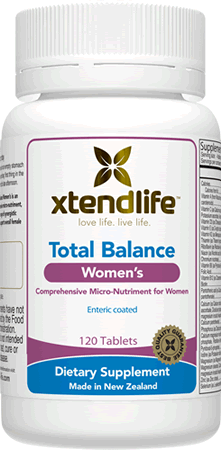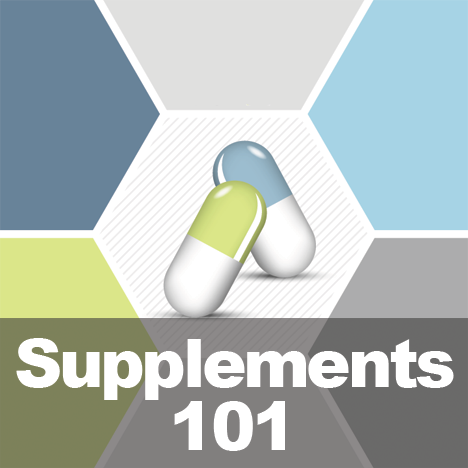 Does your gender affect your nutritional needs?
Does your gender affect your nutritional needs?
For the most part, the human body, whether female or male, needs primarily the same nutritional spectrum in order to work properly. But, there are some key differences that are important to consider when approaching your daily nutrition or that of your loved one’s. The concept of a man, on average, eating more than a woman is not going to make front page news. But how or why is this commonly held observation actually an expression of a biological need?
The short answer is muscle mass. On average, men tend to have a higher percentage of their overall body weight go toward muscle, and on average that overall body weight tends to be higher than that of a woman’s. So perhaps an even better way to approach the caloric distribution among gender would be to think of things in terms of height, weight, and muscle mass, and not just simply “you must eat this amount due to your genitals” 😉
In other words, if a couple comprised of a six-foot-tall woman who also deadlifts 250 lbs at the gym and works as a fitness model, and a 5’6” man who works as a truck driver, calorically the woman should be consuming a higher amount. And since couples can also fall into the trap of always eating the same foods, at the same proportions, it is good to always be mindful of your own personal caloric and nutritional needs, because there are differences that need to be taken into consideration.
There are helpful tools online that can help you determine your body mass index, which in turn, enables you to calculate how many calories you really should be consuming on a daily basis. This will also enable you to determine what amount of calories is needed to maintain your current weight or if you need to lose or gain weight. Another assessment tool helps you determine what nutrients, and at what amount, you need to be consuming. In terms of key nutritional differences, however, there are several nutrients that men and women need in varying amounts.
Protein
Contrary to popular belief the human body does not need nearly as much protein on a daily basis then what was previously touted. Protein IS essential for the growth and repair of living tissues, but it is needed at a proportional amount of roughly .8 grams of protein per kilogram of body weight. And in this case it is very possible to have TOO MUCH of a good thing – if one consume above the upper limit of 60 grams a day of protein, it will actually cause stress to the kidneys, and aggravate dehydration. Not to mention promote weight gain. Protein is very calorie dense and if you are consuming more protein than your body needs and can utilize, it converts the excess caloric energy into fat.
Taking into consideration the difference in body mass, men and women will have different needs when it comes to protein intake. For example, a 160 pound man would need about 58 grams of protein daily, while a 110 pound women would only need 40 grams daily. The only time this shifts is when a woman becomes pregnant. And it shifts rather dramatically, with her needing 25% more protein intake in order to be used for the proper growth and development of the fetus.
Most importantly, each individual needs to be aware of their own unique nutritional needs. Neither sex should approach their plate or supplementation exactly the same way their partner does. The major concern for women to chronically over consume protein is the development of osteoporosis, which result from calcium being leached from the bones in order to help aid the process of excess absorption. For men, the major concern is the development of kidney stones as a result of this same process.
-
Top-Rated Men’s Multi
 Formulated to address specific health concerns for men, including urinary tract health, prostate health, cancer prevention and testosterone production, TB Men’s is the highest quality men’s multi we’ve tested.Read Review
Formulated to address specific health concerns for men, including urinary tract health, prostate health, cancer prevention and testosterone production, TB Men’s is the highest quality men’s multi we’ve tested.Read Review
Visit Xtend Life
-
Top-Rated Women’s Multi
 Provides specific dosages of vitamins and minerals that women need most, and is the highest quality women’s multi we’ve tested. Packed with anti-aging, anti-inflammatory compounds, TB Women’s also provides targeted hormonal support.Read Review
Provides specific dosages of vitamins and minerals that women need most, and is the highest quality women’s multi we’ve tested. Packed with anti-aging, anti-inflammatory compounds, TB Women’s also provides targeted hormonal support.Read Review
Buy Here
Iron
Is another area wherein what might be good for one gender may actually do harm to the other. Menstruating women benefit from receiving 18mg or iron a day due to the loss of iron that takes place during the periods of menstrual bleeding. Men, on the other hand, suffer from an increased risk of heart attacks if they consume over 8mg of iron on a daily basis. And the same goes for women who are menopausal and postmenopausal – their need mirrors that of a man at only 8mg a day of Iron.
Calcium
Gender plays a profound role in how much is recommended for an individual to consume of Calcium daily. Women need a higher amount due to their increased risk of Osteoporosis at a later age (hence the importance placed on women to not over-consume protein, which can exacerbate the issue).
Calcium plays an important role in bone density, which is what deteriorates when a body becomes afflicted with osteoporosis. Men, on the other hand, tend to have denser bone structure and are therefore less affected by bone loss issues and osteoporosis. Instead, it has been found through clinical research that men who consume 2,000 mg of Calcium daily have an exponentially increased risk of advanced prostate cancer. This is why it is recommended that men only consume a conservative amount of 800 mg of Calcium daily.
Fiber
The need for fiber remains constant between the sexes. Both women and men need sufficient amounts of fiber in their diets for a multitude of reasons. Of course, the most obvious of these is the ever-present need for “regularity”. Healthy poops, y’all…there’s no need to sugar coat it! Fiber helps food matter pass through the digestive system in a timely manner, which prevents toxins from accumulating and being reabsorbed into the bloodstream. It has also been discovered that the biodome of the colon includes bacteria that, as they break down and process fiber, produce a collection of compounds known as SCFA’s. Propionate, is one a member of this SCFA group that may be protective against carcinogenesis because it reduces human colon cancer cell growth. Butyrate plays the most critical role in maintaining colonic health and moderating cell growth and differentiation, and exhibits strong anti-inflammatory properties. This means that butyrate is essential in making sure the right cells are produced and in the right amounts.
Part of this reaction to the bacterial breakdown of Fiber also helps to lower blood pressure by reducing LDL, otherwise referred to as “bad cholesterol”. Insoluble fiber also restricts the amount of cholesterol that is able to be absorbed into the bloodstream during its transit through the digestive system.
The importance of fiber is equally paramount for all genders. Differences in recommended amounts is purely proportional in nature. In other words, if a man was consuming roughly 2,000-3,000 calories a day, he would need between 28-42 gram of fiber. A woman who is consuming 1,800- 2,400 calories would need 25-34 grams of fiber daily.
Omega 3 Fatty Acids
Both men and women need Omega 3 Fatty Acids in equal, proportional measure. Omega 3’s are an essential fatty acid which the body can not make on its own, and hence, must be acquired directly from a food source. Foods like fish, kelp, algae, nuts, flax, vegetable oils, leafy greens and grass-fed animal products are all sources of Omega 3 Fatty Acids. These important components of our daily nutrition are an integral part of our cell membranes and affect the function of the cell’s receptors, which are located on these membranes. Omega 3 Fatty Acids are an important part of initiating and monitoring the production of hormones that regulate blood clotting, contraction and relaxation of artery walls.
Omega 3 Fatty Acids are divided into three types: EPA, DHA, and ALA. Each is important and helpful, yet there have been studies that have linked men who take very high supplemental amounts of ALA sourced from flax seed to have an increased risk in prostate cancer. However, high amounts of EPA and DHA did not pose an issue. Granted, normal amounts of ALA did not result in abnormality either. Taking an Omega 3 fatty acid source from algea would be a safe bet for both sexs, in order to get a good balance of EPA and DHA. The appropriate amount of ALA can usually be easily consumed from a healthy, diverse, vibrant diet.
In summary….
Just as each individual will have their own nutritional needs, one’s gender will also impact the supplementation of certain nutrients, which primarily include Protein, Calcium, Iron, Fiber and Omega 3 Fatty acids. This is why you will find multivitamins for men and multivitamins for women. And as our bodies grow older, nutritional needs change in correspondence, which leads us to the last and final chapter of our Multivitamin Facts series: Multivitamins and Age.




